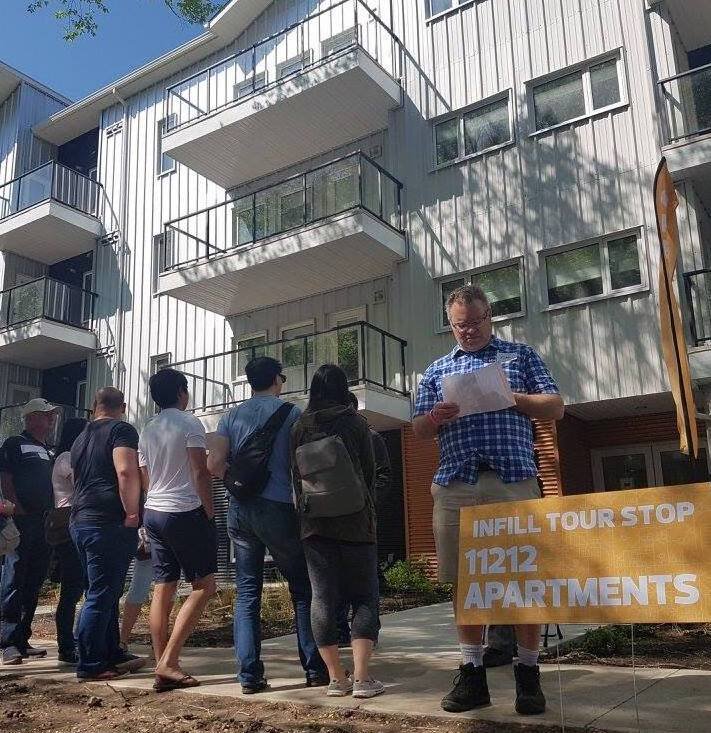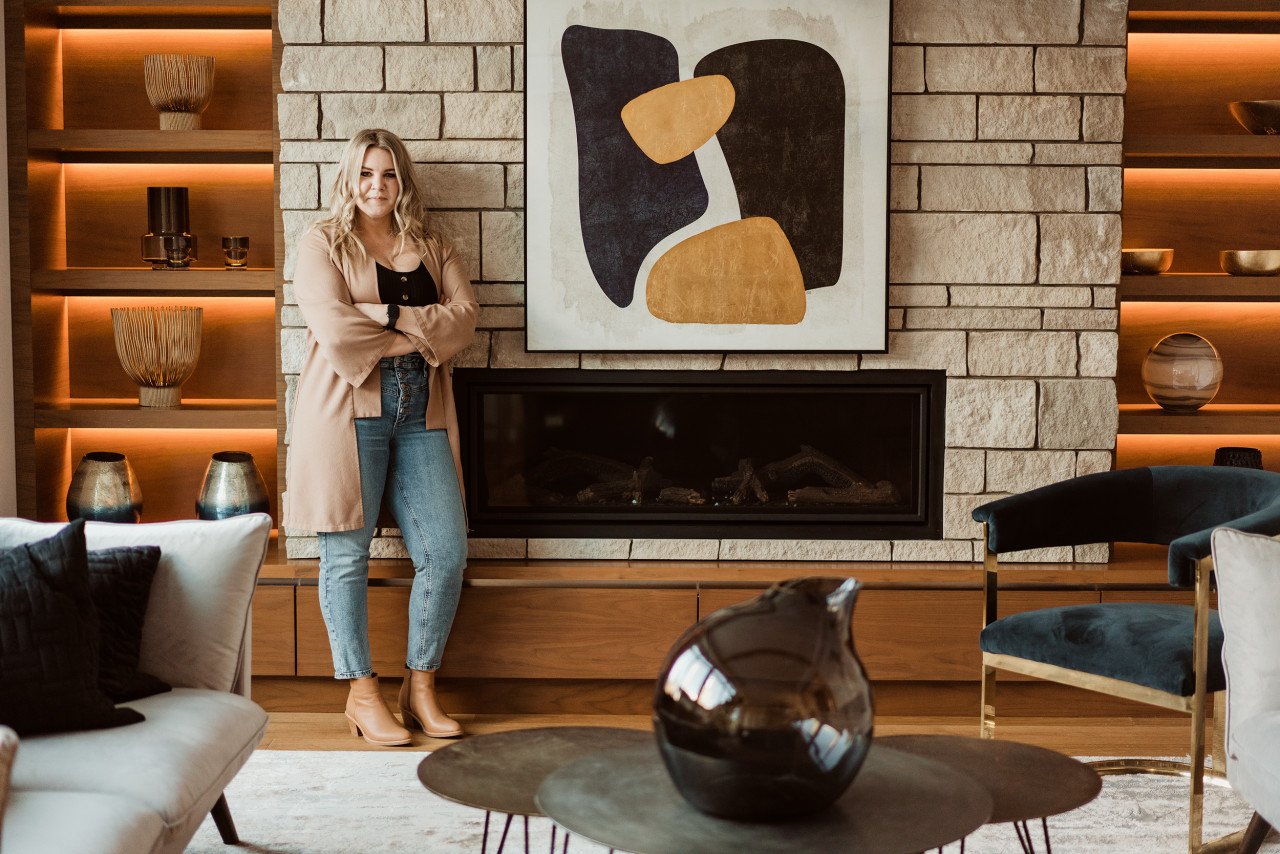Q & A with the Infill Specialists!
If you’re familiar at all with the Edmonton infill community, you may or may not have heard of IDEA (aka Infill Development in Edmonton Association). Encouraging high quality and vibrant infill development in greater Edmonton, IDEA is made up of passionate Edmontonians who are committed to the positive transformation of our existing, mature neighbourhoods. On top of driving change towards people-centred communities, they also provide top notch education and resources on infill development to the community and industry.
We have been involved with the organization over the years, working with IDEA and the City of Edmonton to advocate for greater standards around infill development. Today we have the pleasure of doing a Q & A with Mariah Samji, Executive Director of IDEA, to learn more about what infills mean to the growth of our city and what IDEA represents. Please take a read to get up to date on all things infill!
Why are infill homes important for the Edmonton community?
Edmontonians have a diverse set of housing needs and the majority of our housing stock was built right after WW2 for what was the average nuclear family then. Also, houses typically have a shelf life of about 50 years depending on how they were built and taken care of. With a majority of our housing stock in mature neighbourhoods needing major renovations or to be replaced altogether, coupled with the fact that our demographics have shifted drastically with families and households that come in all shapes and sizes, we need the real estate industry to respond to the needs and wants of people today. For example, homes with open concept, lots of natural light, high ceilings and zero asbestos are items on most Edmontonians wishlists today that are not represented in our existing housing stock.
Are you happy with the progress our city has made in developing areas of high density over the past few years?
Edmonton's City Council and Administration have shifted its resources to reducing barriers and creating new processes for infill development over the past 10 years, and in that time we have reached the goal of 25% of development in our City being infill. However, Edmonton spent the first 105 years of being a city primarily developing suburbs. This means that historically the majority of the processes and development plans for Edmonton have been geared to greenfield development. Over the past decade, IDEA has been working with the city and utility companies to create new processes for infill development. Infill is a lot more complex and expensive and the playing field for infill and suburban development is not anywhere close to equal. There have definitely been significant changes to date, but collectivity we have a long way to go.
What is a common misconception about infills?
Some people believe that the people building infills are in it for financial reasons. When the reality is that people who build infills in Edmonton are so passionate about their work and the people they are building for. They spend all their time reading, researching, volunteering and working to build homes that people will love. If you get the opportunity to chat with someone in the infill industry you might be surprised how passionate they are about their work.
What type of infill has the most potential in Edmonton in your opinion? (ex; duplexes, row housing, garden suites, etc.)
The best thing about infill is it can be built to fit your needs. I am increasingly hearing about social isolation and affordability. These problems can be solved by living closer to your neighbours. Whether that be in a duplex or renting out your secondary suite or garden suite. Having the flexibility to rent out space allows people to live in neighbourhoods with more amenities, and living physically closer to people allows for you to run into your neighbour while you're walking your dog or getting the mail. These small interactions have a huge benefit to our mental health which has been impacted more than ever this year.
What do you think is one of the top benefits of infill?
It is hard to pick just one, but I love to eat out and shop in my neighbourhood. My local grocery store and favourite coffee shop only survive because it has 3 senior facilities and 7 apartments within a 15 min walk. They need people to buy their lattes and baked goods on a regular basis which means they need a bunch of fantastic neighbours to do so. This is only possible if we build infill of all types in neighbourhoods so that service amenities, schools, and transit can survive.
What is the impact of infill on environmental sustainability?
There are many environmental factors that show infill is more sustainable. However, the biggest factor takes a City wide lens to help reduce the problem on a larger scale. Transportation contributes to approximately 28% of greenhouse emissions. If we build more efficient and compact cities, we can reduce the amount of time travelling which will have the biggest impact on helping reduce our environmental footprint.
What is your response to people who are resistant to infill homes?
There are many benefits to infill development including environmental and social needs. One key impact people may not be aware of is the financial benefits to Edmontonians. If Edmonton is able to reach its recently stated goal of 50% development being infill, it is estimated that there will be approximately 8% savings in capital and operating costs to the City which will help keep residential tax rates lower because we won't be building out new areas of the City that would need roads, transit, amenities, fire and health care services. These services have large upfront and ongoing costs to the City and studies show that even over a 25 year period, the taxes collected from the area do not cover those costs. Fundamentally we can't afford to build out suburbs the way we traditionally have.
How do you find a balance between infills and older homes?
The fantastic thing about Edmonton is that we have very skilled design and architecture firms that help create beautiful homes. They understand key design principles such as massing and voids, balance, proportion, and rhythm. When these principles are used in designing a new home, they can build homes that feel comfortable within the streetscape, even if it is in a totally different style than its neighbours.
What’s something most people don’t know about infills?
They are more energy-efficient and safer than older housing stock. Our codes and building materials have evolved over time which heavily influences building practices today. Something you may be familiar with is that we used to use materials that included asbestos all the time historically. If disturbed at all, it can have a negative effect on our air quality. When builders replace older homes they safely remove all asbestos.
What is one of the most unique features you have seen in an infill?
Over the last few months, some homeowners are looking at options for putting their garage in the basement with rear access. The concept plans I have seen is still in the design phase, however, I am keeping an eye out to see if it gets approved.
How does a quality infill stand out from the rest?
We have all chosen a budget choice in our life (it may have been a couch, car or a winter jacket) and the longevity and the lack of quality of the product are proven time and time again. When we don't factor quality into our decision making when it comes to the homes we live in, we spend our time and money fixing, updating and replacing items. It is crucial to ensure whoever you choose to build your home is experienced so that you can spend your time with family and friends instead of solving issues. Edmonton has a very talented community of infill builders that are passionate about creating people-centred communities and IDEA works with many of them.
Why is infill so expensive?
Infill happens in areas where the housing stock is up for renewal. This mainly happens in mature neighbourhoods that have great green spaces, schools, transit, health care options, local pubs, and beauty services. It is these amazing amenities and being close to hubs like universities, downtown and LRT stops, that have increased the value of the land in those neighbourhoods which is a large contributing factor to the costs of the homes. It is also very expensive to remove asbestos properly during demolition which is not something that is required with greenfield developments. Another key factor is that a quality builder focuses on their clients and how the homes integrate well within the communities. This usually means they limit the number of projects they do a year which limits their buying power because they aren't buying 500 windows, they are buying 50. When you combine these factors, the extra permits you need from the City to build an infill home and many other factors, the costs add up. IDEA works on behalf of the infill industry to help make infill development more affordable and sustainable to create a more vibrant city for the future :)
How long does the infill home building process typically take from start to finish?
It really depends on what you are looking to build and what time of year it is. The building process doesn't take too long, however, permits and design impact the timeline. Edmonton has rules on what you can and can't build within the City. It is important to work with someone experienced to reduce timelines.
If building an infill home is on your radar, Urbis can help! We are very grateful to have a full plate of projects to take us into the new year, but are always open to that perfect collaboration with new clients. If you are considering starting construction in 2021, the planning needs to start as soon as possible. Designing and building a home involves several different phases, including architectural design, interior design, permits, demolition and construction. Click here for a more detailed breakdown of our processes and timelines.
There are many phases of the home building process, so working with a vertically integrated design builder has its advantages. As we often hear from our clients in their feedback from past home building experiences, in using a separate company for the design and a different company as the builder, sometimes the integrity of the design gets lost. We as a team, are in tune with each part of the process every step of the way. We also have the ability to have open discussions with clients through the process to ensure we have your desired start in mind and can work towards this from the early stages. You really can’t fast track the design and build anymore than working with us. More details about working with us here.
At Urbis we are even more than a full-service design builder, we are also an Architect and Builder. Our in-house Architect is engaged throughout the entire design and construction phases, to streamline the building process and ensure a high level of design and detail. By having an architect involved, our clients have peace of mind knowing that we are really hands on in reviewing construction and design to be sure it’s the greatest quality. To hear more from Rick Arndt click here!
Our passion and expertise in infill, our vertically integrated team, and our involvement w/ IDEA as a major stakeholder gives us that edge in the industry of residential infill design and building in Edmonton. Thanks so much to IDEA for taking the time to answer these common questions about infill homes. We highly recommend taking advantage of this amazing resource we have in our city if you are interested in learning more. The third round of their Expedited Infill Pilot is coming in November and is a great opportunity to improve your knowledge of infill development, design basics, communication practices, as well as receive expedited Development Permit review timelines for eligible participants.




















